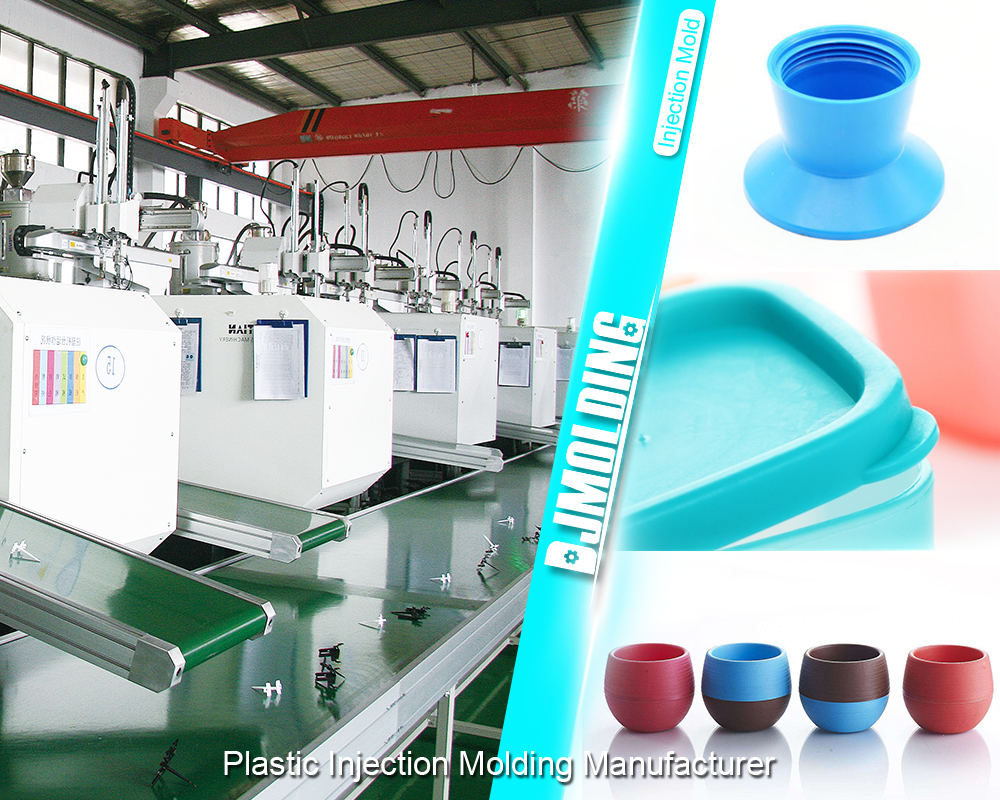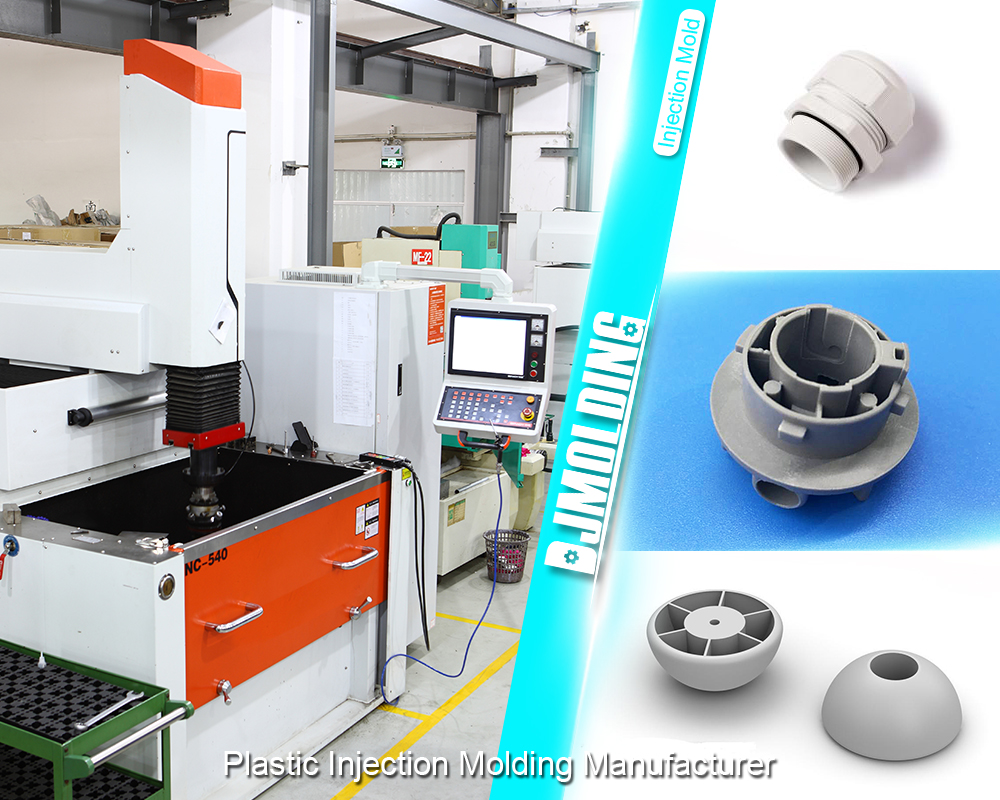Stampaggio ad iniezione di materie plastiche: Spiegazione del processo di produzione
Stampaggio ad iniezione di plastica is a manufacturing process widely used across industries to produce various plastic products. Questo post del blog approfondirà le basi dello stampaggio a iniezione di materie plastiche, suoi vantaggi e limiti, e le industrie che si affidano a questo processo.

Cos'è lo stampaggio ad iniezione di materie plastiche?
I produttori hanno rivoluzionato la produzione di prodotti in plastica attraverso lo stampaggio ad iniezione di materie plastiche, e usano ampiamente questo processo in tutto il settore automobilistico, aerospaziale, medico, and consumer goods industries. Here are some details about what plastic injection molding is and its history:
Definition
Plastic injection molding is a manufacturing process that involves melting plastic resin pellets and injecting them into a mold to produce a specific shape or form. The injection molding process involves injecting melted plastic at high pressure into a mold cavity typically made of steel. After the melted plastic fills the mold cavity and takes on its shape, it cools and solidifies. Quindi, the manufacturer ejects the finished part from the mold.
History of Plastic Injection Molding
The plastic injection molding process was first developed in the 1930s by the German chemist Otto Bayer. He discovered that polymers could be melted and then shaped into various forms. In the following years, manufacturers improved the process by developing more advanced injection molding machines and using more advanced materials. Oggi, plastic injection molding is a widely used manufacturing process that produces a wide range of plastic products, from simple toys to complex medical devices.
Il processo di stampaggio ad iniezione di materie plastiche
Plastic injection molding is a complex process that involves several steps and components. Here are some details about the plastic injection molding process:
The Basics of the Process
The plastic injection molding process involves six basic steps: clamping, iniezione, dwelling, raffreddamento, mold opening, and ejection. During the clamping phase, the mold is closed and held under pressure. During the injection phase, the manufacturer injects the plastic into the mold. During the dwelling phase, the plastic cools and solidifies inside the mold. Once the plastic has solidified, the manufacturer opens the mold and ejects the finished part.
The Major Components of a Plastic Injection Molding Machine:
A plastic injection molding machine consists of four major components: il gruppo di iniezione, clamping unit, muffa, and controller. The injection unit is responsible for melting the plastic and injecting it into the mold, and the clamping team holds the mold in place during the injection process. The mold is the cavity in which the plastic is injected and takes on its final shape. The controller controls the operation of the machine and monitors the process parameters.
The Different Types of Plastic Resins Used in Injection Molding:
Manufacturers use several plastic resins in injection molding, compresi i materiali termoplastici, thermosetting plastics, ed elastomeri. Manufacturers commonly use thermoplastics in injection molding because they can melt and re-melt them multiple times. Once manufacturers cure thermosetting plastics, they cannot re-melt them. Elastomers are rubber-like materials that can be stretched and returned to their original shape.
Plastic injection molding involves several steps and components that produce high-quality plastic products. By understanding the basics of the process and the materials involved, manufacturers can optimize their production and create products that meet the needs of their customers.
The Benefits and Limitations of Plastic Injection Molding
Stampaggio ad iniezione di plastica has become a popular manufacturing process due to its numerous benefits. Tuttavia, manufacturers need to consider some limitations of the injection molding process. In this section, we will discuss the benefits and limitations of plastic injection molding.
- Vantaggi dello stampaggio a iniezione di materie plastiche:
- High Efficiency: The process allows for the mass production of high-quality parts with a short cycle time, making it a cost-effective solution for large-scale production.
- High Accuracy: The process allows for precise and consistent parts production, ensuring high-quality end products.
- Repeatability: The process provides for producing identical parts with consistent quality, reducing the need for rework and ensuring uniformity.
- Ability to Produce Complex and Intricate Parts: The process allows for making complex and intricate parts with high accuracy and consistency.
Limitations of Plastic Injection Molding
- High Startup Costs: The process requires a significant investment in equipment and tooling, making it less cost-effective for small-scale production.
- Long Lead Times: The process involves several stages, including design, utensili, e produzione, which can lead to longer lead times compared to other manufacturing processes.
- Limitations in Part Size and Geometry: The operation has limitations in part size and geometry due to the design and regulations of the molding machine.
Industries That Rely on Plastic Injection Molding
Plastic injection molding is a versatile manufacturing process that finds its applications across different industries. This section will explore some sectors that rely heavily on plastic injection molding to produce various components and products.
- Industria automobilistica: The automotive industry is one of the most significant users of plastic injection molding. The process produces many components, including bumpers, cruscotti, pannelli delle porte, and other interior and exterior parts. The use of plastic injection molding in the automotive industry has several benefits, including cost-effectiveness, riduzione di peso, and improved design flexibility.
- Industria aerospaziale: The aerospace industry relies on plastic injection molding to produce various parts for airplanes, spacecraft, and other aircraft. The process is beneficial for making complex parts with intricate geometries that are difficult to achieve using traditional manufacturing processes. Plastic injection molding is also ideal for producing lightweight components, a key consideration in the aerospace industry.
- Industria medica: The medical industry uses plastic injection molding to create a range of medical devices and equipment, including catheters, siringhe, strumenti chirurgici, and prosthetic devices. The process allows for the creation of high-quality, precise parts that meet strict industry standards. Inoltre, plastic injection molding is ideal for producing disposable items crucial in maintaining hygiene and preventing the spread of diseases.
- Consumer Goods Industry: The consumer goods industry uses plastic injection molding to create a wide range of products, compresi i giocattoli, elettronica, elettrodomestici, and packaging materials. The process is beneficial for making small, intricate components that require high precision and accuracy. Producing components with different colors and textures is also a significant advantage in the consumer goods industry.

CONCLUSIONE
Manufacturers widely use plastic injection molding across automotive, aerospaziale, medico, and consumer goods industries because it is a crucial manufacturing process for producing high-quality plastic products. In questo articolo del blog, we have provided an overview of the plastic injection molding process, suoi vantaggi e limiti, and the industries that rely on it. With its ability to produce complex and intricate parts, it is no surprise that plastic injection molding is a widely used manufacturing process today.
Le diverse forme di plastica nei diversi stili possono essere facilmente acquisite in fase di stampaggio stampaggio ad iniezione plastica,puoi fare una visita a Djmolding a https://www.djmolding.com/low-volume-injection-molding/ per maggiori informazioni.
Source From: https://www.djmolding.com/plastic-injection-molding-the-manufacturing-process-explained/


